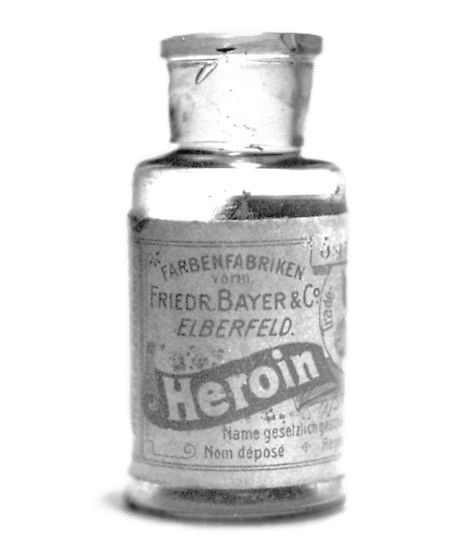The Opioid Crisis
THE OPIOID CRISIS
What do we know about the opioid crisis?
-
Roughly 21 to 29 percent of patients prescribed opioids for chronic pain misuse them.6
-
Between 8 and 12 percent develop an opioid use disorder.6
-
An estimated 4 to 6 percent who misuse prescription opioids transition to heroin.7–9
-
About 80 percent of people who use heroin first misused prescription opioids.7
-
Opioid overdoses increased 30 percent from July 2016 through September 2017 in 52 areas in 45 states.10
-
The Midwestern region saw opioid overdoses increase 70 percent from July 2016 through September 2017.10
-
Opioid overdoses in large cities increase by 54 percent in 16 states.10
Quarterly rate of suspected opioid overdose, by US region
Source: Centers for Disease Control and Prevention.10
This issue has become a public health crisis with devastating consequences including increases in opioid misuse and related overdoses, as well as the rising incidence of neonatal abstinence syndrome due to opioid use and misuse during pregnancy.
The increase in injection drug use has also contributed to the spread of infectious diseases including HIV and hepatitis C. As seen throughout the history of medicine, science can be an important part of the solution in resolving such a public health crisis.
There’s a Better Way
WE AIM TO CURE YOUR PAIN, NOT JUST MANAGE IT. THE DIFFERENCE IS ELIMINATING YEARS OF TREATMENT, MEDICATIONS AND UNNECESSARY PATIENT COSTS.

The Origins of the opioid crisis?
For many, pain is a transient part of life and one that can be overcome with some grit and patience. For the unfortunate few, pain relief can only be achieved by the aide of medications, therapies and occasionally, surgery. Many sufferers find relief with opioid pain medications, but now this fundamental treatment is being questioned and targeted to end. How did we get to this point?
Within this summary, and future content, my team and I will strive to providing you a resource with which you can understand pain, it’s treatments, classifications, therapeutic options and how you can succeed to a pain free life.
September is recognized as Pain Awareness Month, and since Pain MD Houston is re-establishing itself within the Houston market, we wanted to provide you brief reviews and opinions related to this phenomenon which continues to challenge the greatest minds and societies of 2019.
Historical Background
Pain has its roots as a philosophical, religious and political tool. Pain is part of life as much as “to err is to be human” and religions immortalized pain and suffering as the basis for faith (Passion of Christ). Politics however has not been as consistent. American politics have been hot and cold regarding opioids, but one thing is certain, when it’s hot, a medical renaissance generally occurs from government funding for better treatment options.
In 2016 the Centers for Disease Control (CDC) published their guidelines for it prescribing. President Obama initiated this effort and it was supported when President Trump labeled the Opioid Epidemic/Crisis as a National Public Health Emergency in May 2018.
This occurred in conjuncture with a sky rocketing rise in opioid related deaths (including notable social figures), increase rates of HIV and Hep C, a rising number of children in Foster Care and an absence of evidence-based therapies for medication assisted therapies. These are obvious social needs that need to be assisted by the federal government, however, what preceded this Political stance is what will drive us to future solutions. Those who cannot remember the past are condemned to repeat it.

The roots of the American opioid crisis are not recent, but rather 150 years ago when morphine was used to treat pain during the American Civil War. 50 years prior to that, morphine was first isolated from opium by Fredrick Turner in Austria. The two natural occurring isolates of opium are Morphine and Heroin, commonly referred to as opioids.
It became more readily available in 1853 when Sir Alexander Wood from Scotland developed the hollow needle, allowing a non filtered, direct bodily delivery. The Civil war occurred between 1861-1865 and a need for treatment for CRPS, Phantom limb pain, Post Amputation Pain was pressing. 750,000 soldiers became addicted to opioids.
Matter of fact, until 1906, morphine and cocaine, was available as an over the counter therapy. With such easy access, the first crisis became relevant. in 1896, Bayer Pharmaceuticals created the diacetylated morphine under the name Heroin, as a cough remedy, likely contributing to requirement for prescription therapy around 1900, when Bayer discovered aspirin, which obviously treated headaches and tooth aches safer than morphine.
By 1910, working class Americans had learned to crush the heroin pill into powder and inhale it. By 1914, government put fourth the Harrison Narcotic Control Act, the first wave of government’s involvement in the opioid crisis. By 1917, aspirin was used for mild to moderate pain and morphine and surgery were options for severe pain. Morphine was essential in treating severe pain states such as cancer pain or pre-death pain conditions.
In 1929, the Committee on Drug Addiction was formed to find a therapy for the gap between aspirin and morphine. Along came medications such as oxycodone, meperidine, methadone and pentazocine. At the same time, enhancements in surgical treatments emerged as well, primarily focusing on therapeutic serial nerve blocks prior to surgical nerve removal (Drs. Leriche and Livingston).
In 1936, Dr. Rovenstine, an anesthesiologist at the Bellevue Hospital, started the first nerve block clinic for pain relief. A decade later Dr. John Bonica (in Washington) and Dr. Alexander (in Texas), independently opened the first multidisciplinary pain clinics. They leveraged the concepts of medication, surgery and psychological treatments. Dr. Melzak later conceptualized the gate control concept, the foundation for our current management of pain.
In 1986, our current opioid crisis began. Dr. Portnoy’s landmark paper truly underestimated the risks of opioids on non-cancer pain treatments, by stating there was a <1% immediate risk.
How about the long-term dependence, tolerance, neurohormonal changes? What we learned from this is: 1) proper long termed research is needed before making strong recommendations, 2) Special interest groups such as the pharmaceutical and surgical device companies must be cautiously partnered with and 3) that opioids are not the final answer for pain management.
Historical therapies are the foundation for current Pain Management, however, the growing field of Interventional Pain Management will be the final solution. We may never get to a point where opioids are eliminated, but our current renaissance in pain management will make it so that opioids will not be the first choice of treatment, but rather the last option, at safe doses managed with modern surgical and interventional advances.
Please follow us to learn about exciting multidisciplinary options for pain management in The Woodlands. An educated patient will always be the most empowered patient.
